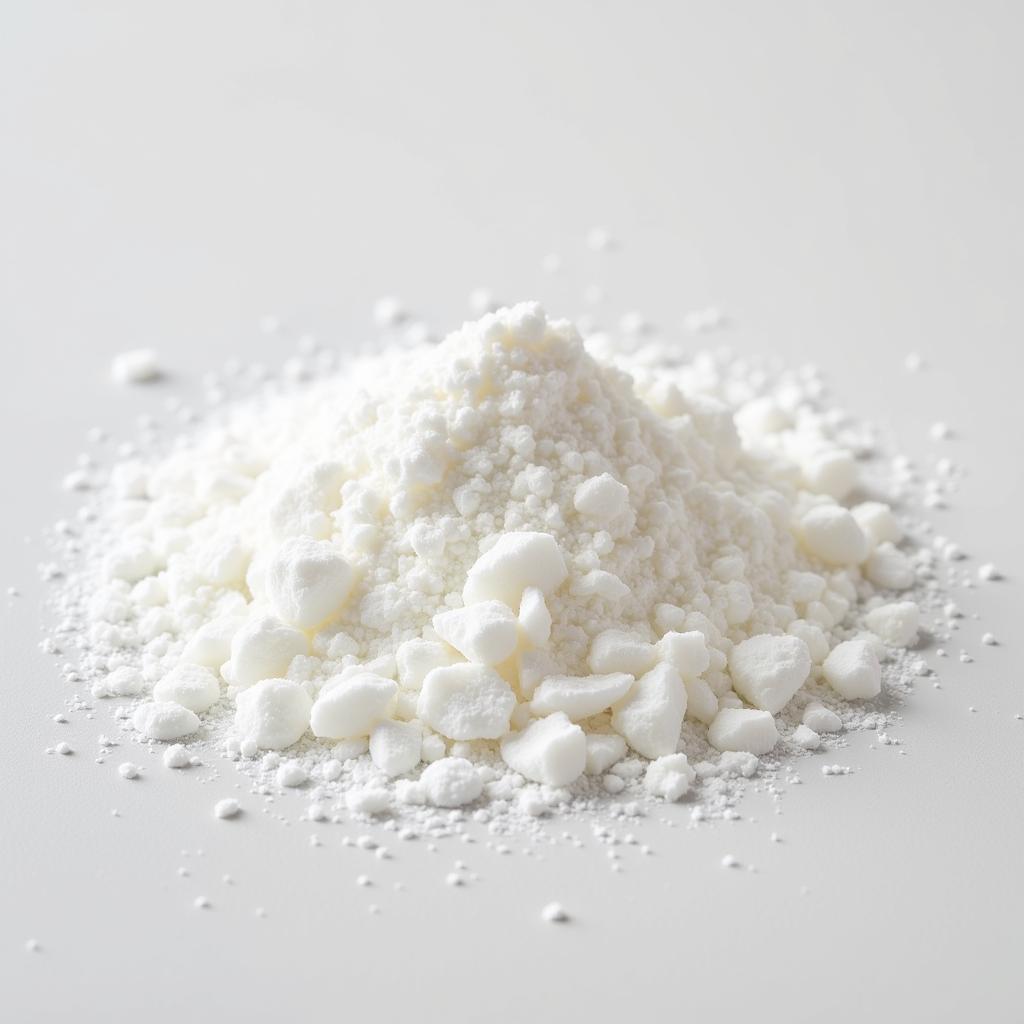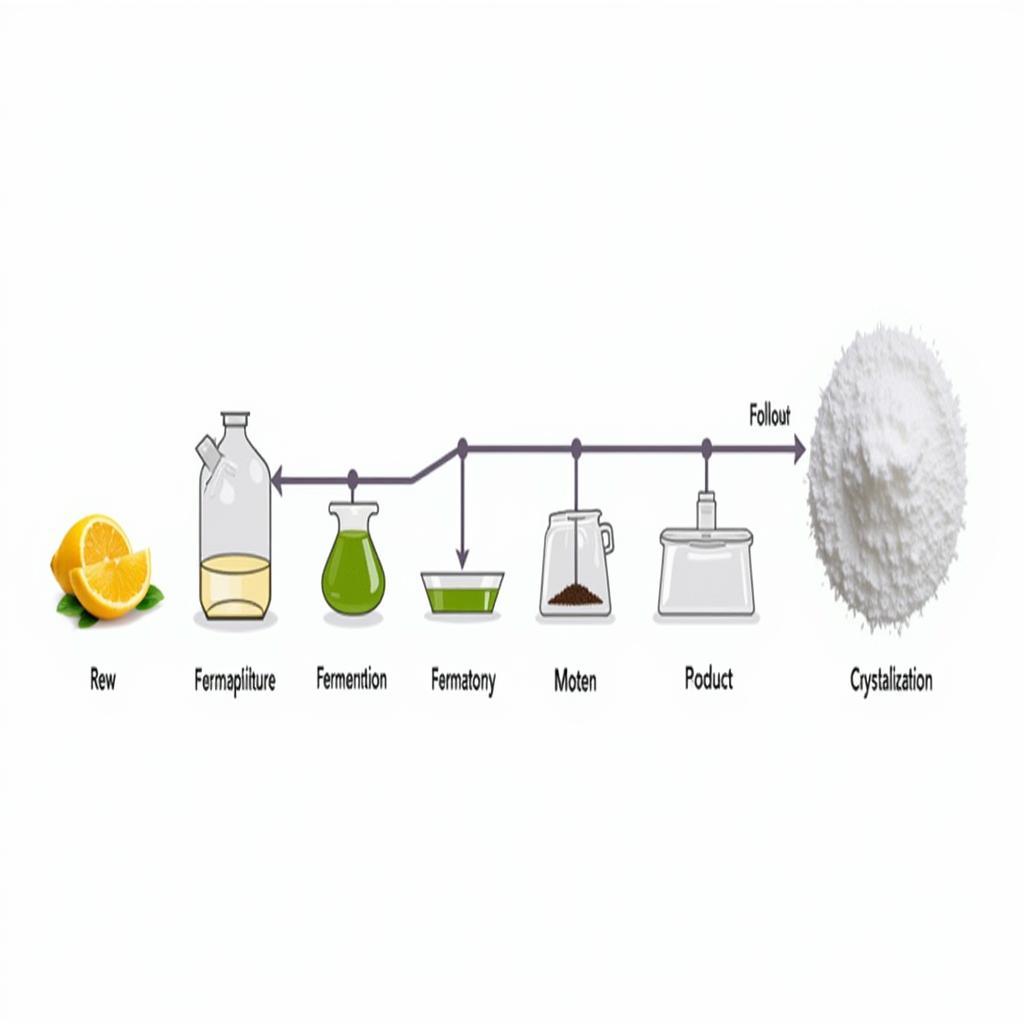Citric Acid Food Grade is a ubiquitous ingredient found in countless food products, from candies to canned goods. But what exactly is it, and how does it contribute to the flavor and preservation of our favorite foods? This guide explores everything you need to know about citric acid food grade, from its properties and uses to its safety and sourcing.
Understanding Citric Acid Food Grade
Citric acid food grade is a weak organic acid naturally occurring in citrus fruits like lemons and limes. It’s responsible for their characteristic tartness. While naturally derived citric acid is still used, most commercial citric acid food grade is produced through fermentation. This process uses microorganisms like Aspergillus niger, a type of mold, to convert sugars into citric acid. The resulting product is a white, crystalline powder that’s highly soluble in water. This form is ideal for a wide range of food applications.
 Citric Acid Food Grade Powder
Citric Acid Food Grade Powder
The Versatile Roles of Citric Acid in Food
Citric acid food grade plays a multitude of roles in food production. Its primary function is as an acidulant, providing a sour or tart taste. This is why it’s a key ingredient in sour candies, beverages, and jams. Beyond flavor, citric acid acts as a preservative, preventing microbial growth and extending shelf life. Its antioxidant properties also help maintain the color and quality of foods. Furthermore, citric acid acts as a chelating agent, binding metal ions and preventing discoloration and undesirable changes in texture.
 Citric Acid in Beverages
Citric Acid in Beverages
How Citric Acid Food Grade Impacts Flavor and Preservation
The impact of citric acid food grade on both flavor and preservation is significant. As an acidulant, it balances sweetness and adds a refreshing tartness. This is particularly evident in fruit-flavored products. As a preservative, it inhibits the growth of bacteria, yeast, and mold, ensuring food safety and prolonging shelf life. This is crucial in canned and processed foods.
Is Citric Acid Food Grade Safe?
Citric acid food grade is generally recognized as safe (GRAS) by regulatory bodies worldwide. It’s been extensively studied and has a long history of safe use in food. However, like any substance, excessive consumption can potentially cause minor side effects like tooth enamel erosion or stomach upset.
Sourcing Citric Acid Food Grade
Most citric acid food grade is produced through fermentation using substrates like molasses or corn starch. The process involves several steps, including fermentation, purification, and crystallization. Choosing a reputable supplier ensures the quality and safety of the citric acid you use.
 Citric Acid Manufacturing Process
Citric Acid Manufacturing Process
Conclusion
Citric acid food grade is a vital ingredient in the food industry, contributing to both flavor and preservation. Its versatility, safety, and wide availability make it an essential component in countless food products. Understanding its properties and applications allows for informed choices about the foods we consume. From the tangy zest in our favorite candies to the extended shelf life of preserved goods, citric acid food grade plays a crucial role in ensuring the quality and enjoyment of our food.
FAQs about Citric Acid Food Grade
-
What is the difference between citric acid and citric acid food grade? Citric acid food grade is specifically manufactured and purified for use in food, ensuring it meets strict quality and safety standards.
-
Where can I buy citric acid food grade? You can purchase citric acid food grade from various suppliers, including online retailers and specialty food stores.
-
How should I store citric acid food grade? Store it in a cool, dry place, away from direct sunlight and moisture.
-
Can I use citric acid food grade in home canning? Yes, citric acid food grade is often used in home canning to increase acidity and prevent botulism.
-
Is citric acid food grade vegan-friendly? Most commercially produced citric acid food grade is vegan-friendly, as it’s produced through fermentation.
-
What are the common uses of food grade calcium hydroxide? food grade calcium hydroxide is often used in food processing.
-
Does citric acid food grade expire? While it has a long shelf life, citric acid food grade can lose its potency over time.
Possible Situations Requiring Citric Acid Food Grade Knowledge
You might need detailed information on citric acid food grade if you’re a food manufacturer developing new products, a home canner preserving fruits and vegetables, or a consumer with dietary restrictions or allergies.
Further Exploration
For more information on food additives and ingredients, you might find our article on food grade calcium hydroxide helpful.
Need further assistance? Contact us at Phone Number: 02437655121, Email: minacones@gmail.com, or visit our address: 3PGH+8R9, ĐT70A, thôn Trung, Bắc Từ Liêm, Hà Nội, Việt Nam. We have a 24/7 customer service team.